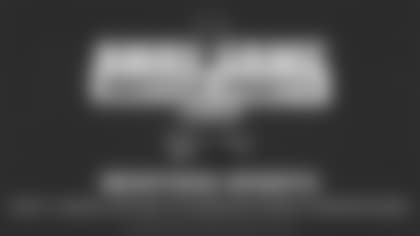Colts President Bill Polian Discusses Need-Talent Graph
INDIANAPOLIS – The way Bill Polian sees it, it's not always easy to provide a definition of exactly how the Colts approach the NFL Draft when it comes to need versus potential.
The easier approach, he said, is to provide an example. And to Polian, the example is obvious:
Wide receiver Reggie Wayne.
Polian, preparing for his 12th draft as the Colts' President, said recently he recalls well the circumstances around the 2001 NFL Draft, as many Colts fans likely do. The Colts needed defense. They didn't necessarily need wide receiver.
The Colts traded down from the No. 22 selection to No. 30.
And still, Polian said, they weren't crazy about the defensive players available.
But they liked Wayne, and believed him the best player available at that spot.
They needed him just enough, and selected him with the No. 30 selection.
"He's the most glaring example," Polian said. "Most people thought the last thing we'd ever do was to take a wide receiver that year."
Polian added with a laugh:
"We thought so, too."
The reason the Colts selected Wayne, Polian said, was what he called when the "need axis" and the "talent access" met, meaning that while the most-glaring need on paper that season may not have been receiver, as the draft wore on and Wayne was still on the board, his value became too obvious to not select him.
"When it came time to pick, we didn't have a consensus on a defensive player," Polian said. "There was Reggie sticking out like a sore thumb, as the best player. We said, 'Take him.'
"It worked out fine."
The theory, Polian said, is based upon a long-standing football philosophy that a team can find a way for good players to contribute, and that good players – no matter the position – drafted for their ability will help a team more than average ones drafted for need.
And through the years, Polian said the Colts have adhered to that philosophy, which may be a reason the Colts' selection often is different than analysts and observers performing various versions of mock drafts.
The Colts in 2003 for example were widely believed to need defensive help. Instead, they selected tight end Dallas Clark.
Since 1998, Polian's first season, the Colts have been one of the most consistently-success drafting teams, a trend that is particularly true in Round One. Since 1998, the Colts' first selections have combined to make 23 Pro Bowls, and it's a list that consists of the following players:
• Quarterback Peyton Manning (nine), 1998.
• Running back Edgerrin James (four), 1999.
• Wayne (three), 2001.
• Defensive end Dwight Freeney (four), 2002.
• Safety Bob Sanders (two), 2004.
• Running back Joseph Addai (2006).
Other Colts draftees in the Polian era to make the Pro Bowl include linebacker Cato June (one), safety Antoine Bethea (one) and defensive end Robert Mathis (one), and with 26 Pro Bowls in 11 drafts, Polian said he maintains a philosophy that's simple in concept if not in execution.
"You measure the talent available to you and you try to measure their talent as best you can, and all of the other concerns you come to the table with," Polian said. "Then, you try to take the best player. I just think you try to take the best player, basically."
It's an approach Polian said the Colts take well beyond Round 1. In fact, he said, it's a draft-long approach and has been for years.
"We don't draft specific need almost anywhere," he said. "If the need line and talent line cross, then fine, but we try always to take the best player."














